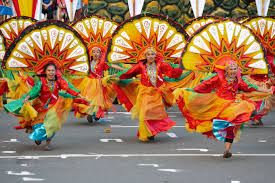About the Festival
CS Lewis Jubilee Festival | Celebrating the Legacy of C.S. Lewis
The CS Lewis Jubilee Festival is more than just a cultural event—it is a living tribute to the imagination, faith, and timeless literary legacy of one of the most beloved authors of the 20th century. Known around the world for his works such as The Chronicles of Narnia, Mere Christianity, and The Screwtape Letters, C.S. Lewis left behind a profound influence that continues to inspire readers, thinkers, and dreamers. The festival honors his memory by bringing together literature, art, music, and dialogue in a unique celebration of creativity and community.
Honoring a Timeless Legacy
C.S. Lewis’s writings bridge the gap between fantasy and faith, philosophy and imagination. The Jubilee Festival highlights this dual heritage by curating events that explore his impact on both literature and theology. From public lectures on his spiritual insights to creative workshops inspired by Narnia’s magical landscapes, the festival allows audiences to rediscover Lewis’s relevance in today’s world.
For many attendees, the event is not just about nostalgia—it’s about finding renewed meaning in the values Lewis cherished: wonder, courage, integrity, and the pursuit of truth.
A Festival of Arts and Inspiration
The CS Lewis Jubilee Festival offers a wide array of experiences designed to appeal to all generations:
-
Literary Readings & Performances: Actors and scholars bring Lewis’s most famous passages to life, whether through dramatic retellings of The Lion, the Witch, and the Wardrobe or thoughtful recitations of his essays.
-
Music & Arts Exhibitions: Musicians perform pieces inspired by his era, while local artists showcase works that interpret Lewis’s worlds in visual form.
-
Interactive Workshops: Young readers and aspiring writers are encouraged to engage in storytelling activities, exploring themes of creativity, morality, and fantasy.
-
Panel Discussions: Experts discuss Lewis’s influence on literature, theology, and modern culture, offering insights into his enduring popularity.
A Gathering of Community
One of the festival’s strongest features is its community spirit. It serves as a meeting point for academics, artists, families, and fans who share an admiration for Lewis’s work. From school groups eager to learn to seasoned scholars presenting research, the festival provides a space for meaningful encounters and intergenerational exchange.
This sense of belonging reflects Lewis’s own belief in the importance of fellowship and shared imagination. Just as his books brought people together through stories, the Jubilee Festival builds bridges between communities and cultures.
Why It Matters Today
In an age of rapid change and digital distraction, the CS Lewis Jubilee Festival reminds us of the enduring power of literature to shape minds and hearts. Lewis’s themes—faith, friendship, hope, and the triumph of good over evil—resonate deeply in today’s society.
By keeping his legacy alive through public celebration, the festival not only preserves the past but also inspires the future. It encourages participants to dream, to ask big questions, and to embrace creativity as a path toward truth and connection.
A Celebration for All
Whether you are a lifelong admirer of C.S. Lewis, a casual reader who grew up with Narnia, or someone new to his works, the festival invites you to join in the celebration. It is a chance to immerse yourself in art, literature, and thoughtful dialogue, while honoring a writer whose words continue to ignite imagination across generations.
